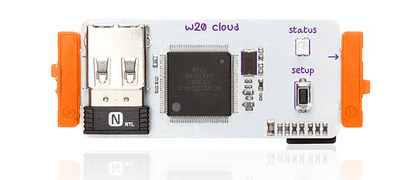LittleBits, the maker of what might best be thought of as electronic Lego kits, last week launched cloudBit, a module that provides users with access to the Internet.
The company also announced RadioShack as its first retail partner.
LittleBits offers modules that are used, like Legos, to build gizmos with electronic capabilities.
The modules are held together by magnets, and no soldering or wiring is needed.
“The product comes in a range of styles from those aimed at primary school education to maker-inclined individuals and groups,” Charles King, principal analyst at Pund-IT, told TechNewsWorld.
“These latest additions to the portfolio could be used to rough out electronics prototyping and proof-of-concepts to see if there’s enough to the idea to warrant further investigation and development,” he explained.
“This is serious cool, and I’m considering doing it with my sons,” raved Jim McGregor, principal analyst at Tirias Research.
More About LittleBits
To understand the impact of cloudBit on littleBits projects, you first have to know just what littleBits offers.
LittleBits has a library of five kits and 50 interoperable components or modules, ranging from a microphone to a keyboard to sensors.
The Base Kit, for example, has 10 modules including a DC motor, dimmer and light sensor, and an instruction book with eight projects. The modules have more than 150,000 possible circuit combinations.
New modules can be added when required.
The Base kit costs US$99.
Projects are listed on littleBits’ blog.
What CloudBit Offers
CloudBit is a module that lets other littleBits modules access the Internet via WiFi.
“With the cloudBit, we’re doing for connected devices what Android did for mobile,” said littleBits founder and CEO Ayah Bdeir, “making an open, accessible and instantaneous platform to enable anyone to prototype, test ideas, and participate in a field that is changing society.”
The cloudBit module has to be plugged into a wall socket. Users then log into the littleBits Web app.
The littleBits Web app offers users three types of interactions: “Bits to Web” (such as an SMS doorbell), “Web to Bits” (such as a remote pet feeder) or “Bits to Bits” (such as a cloud-controlled camera).
Among other things, cloudBit lets users automate various actions.
One project on the cloudBit Web page involves the use of a cloudBit and a littleBits slider to monitor how much food the builder’s chickens eat.
Users can link up with IFTTT, a service that lets them chain websites together with simple if-then logic (IFTTT stands for “If this then that”).
IFTT’s basic building blocks are channels. There are 118 of them, including Facebook, Evernote, LinkedIn and email. Users can create a statement to, for example, have new photos they post on Facebook saved automatically to their Dropbox account.
Users who already have littleBits modules can get a cloudBit, a USB power cord and a wall adapter, for $60.
The Cloud Starter Bundle, which consists of six modules, an insert card with five tutorials and 100 more available online, a USB power cord and a wall adapter, costs $100.
Thumbs-Up for LittleBits
LittleBits “takes the electronics components kits of the past to a new level,” Tirias’ McGregor told TechNewsWorld.
“With everything integrated into silicon components, no one needs transistors or diodes; they need the critical system-level components,” he elaborated. LittleBits “puts these right into your hands with a cool form factor similar to what most of us are accustomed to.”
Adding Internet connectivity “is a key component because we live in a connected world,” said McGregor, and it “makes it a realistic development platform.”























































